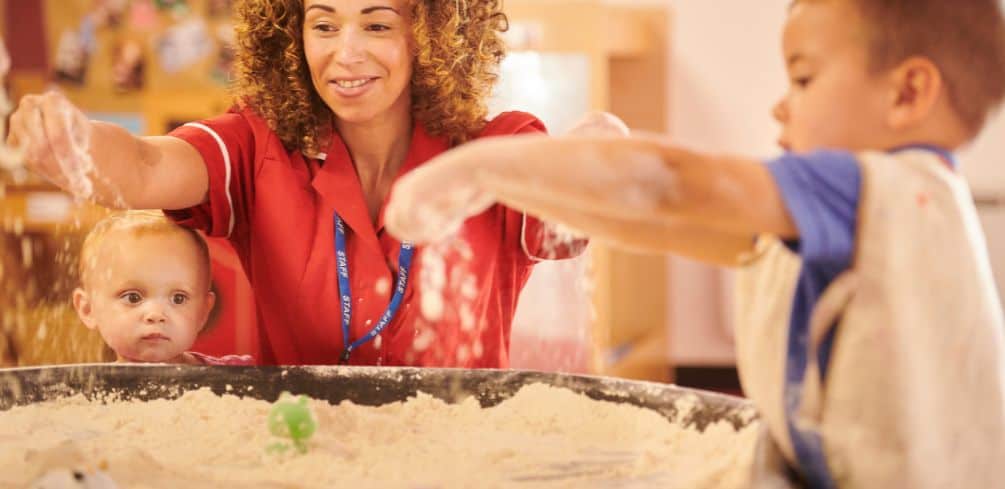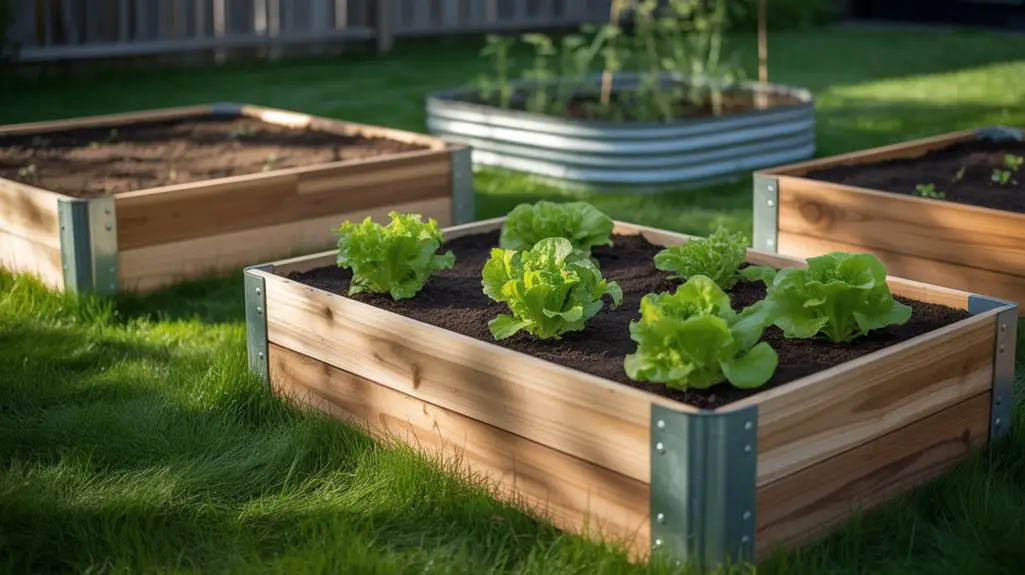Are you looking for a safe and effective way to clean the sand in your child’s sandpit? It’s important to keep the sand clean and free of dirt, debris, and any other foreign materials.
With a few simple steps, you can easily keep your kid’s play area clean and safe. In this article, we’ll show you how to properly clean sandpit sand so that it is free of bacteria, dust, and other potential hazards.
Do you want to ensure that your little one isn’t exposed to anything harmful while playing in their sandpit? Cleaning the sand regularly is essential for keeping it healthy. You don’t need any special equipment or chemicals; just follow our easy steps below, and you’ll have fresh, safe sand for your child to enjoy.
You’re probably wondering what the best way is to clean the sand without putting your child at risk. Don’t worry; we’ve got you covered!
We’ll provide simple instructions on how to effectively and safely clean the sand in your kid’s outdoor play area so they can have fun without worrying about germs or dirt. Read on to find out more!
Purpose Of Cleaning Sandpit Sand
Cleaning sandpit sand is essential in maintaining sanitary conditions. It’s important to remove debris and prevent bacteria from growing. Doing so can provide a safer environment for children to play in. The purpose of cleaning sandpit sand is to ensure its hygiene and sanitizing.
Removing debris such as leaves, twigs, and other objects should be the first step when cleaning the sandpit. This will keep children from tripping over them or getting hurt by sharp items. Additionally, it helps keep the sand more comfortable for kids to lay on and play with.
When it comes to preventing bacteria growth, it’s important to disinfect the sandpit regularly with an appropriate cleaner that’s safe for use around children. This should be done every two weeks or after heavy rain or storms when there may be more dirt or objects present in the pit. Taking these steps helps ensure that your little ones stay healthy and happy while playing in the sand!
Materials Needed
Now that the purpose of cleaning sandpit sand has been established, it’s time to look at what materials are needed to get the job done. To clean a sandpit properly and safely, you will need a bucket, rubber gloves, garden hose, scrub brush, and dustpan.
The first step is to gather your materials. You will want to use a bucket or other container large enough to hold all the sand that needs to be cleaned.
Make sure that you have rubber gloves on hand, so you do not come into contact with any dirt or debris while handling the sand. A garden hose can be used for washing away any residue from the bottom of the pit. Finally, you will need a scrub brush and dustpan for removing any remaining dirt or debris from the sand.
Once you have all your materials gathered, it is important to take safety precautions when cleaning the sandpit. This includes wearing protective gear such as goggles and gloves, as well as setting up barriers around the area if necessary. Additionally, make sure that all children in the vicinity are supervised during this process.
All of these steps are essential for ensuring that your sandpit is cleaned safely and effectively. With the right materials on hand and proper safety measures taken, you can enjoy a clean, safe sandbox for years to come!
Preparation Steps
Before beginning the cleaning process, it’s important to gather the necessary supplies. Lay out a tarp or plastic sheet in the work area, and make sure to wear gloves while handling the sand.
| Supplies | Description |
|---|---|
| Tarp/plastic sheet | To cover the work area and collect any dirt that may fall off during the sifting process |
| Gloves | To protect hands from potential skin irritants or germs contained in sandpit sand |
| Bucket | To contain dirty and clean sand during the sifting process |
Once the supplies are gathered, it is time to prepare the work area. Clear away any debris or stones that may be present in the sandpit and ensure there is no standing water.
Then, begin sifting through the sand with a garden sieve to remove any large pieces of debris. Fill a bucket with a few handfuls of sand at a time, then rinse it off with water until all dirt particles have been removed. Repeat this step for each batch of sand until all of it has been cleaned.
When finished, allow the clean sand to dry completely before replacing it in your child’s play area. After ensuring that all areas have been properly sanitized, let your little one enjoy their newly cleaned sandbox!
Cleaning Process
The previous section discussed the preparation steps for cleaning a sandpit, and now it’s time to get down to business. Cleaning a sandpit and its sand can be a tricky process, but it doesn’t have to be complicated. With the right supplies, the right technique, and some patience, you can easily clean your sandpit sand in no time.
First things first: remove as much debris from the surface of the sand as possible. This includes leaves, sticks, and any other large pieces of debris that may have made their way into your sandpit.
Once all of this is removed, it’s time to start removing any remaining dirt or debris from the sand itself. You can use a trowel or a garden rake to do this – just make sure you scrape away all of the dirt and debris until you see only clean sand beneath.
After you’ve cleared out all of the dirt and debris, you’re ready for the final step in cleaning your sandpit: sifting through the entire contents of the pit with a fine-meshed sieve or strainer. This will help ensure that all small bits of dirt and debris are removed from your clean sandpit sand before you pour it back into your pit.
Once everything has been thoroughly sifted through, simply replace the clean sand into your pit, and voila – you’re done!
So there you have it – an easy-to-follow guide on how to clean your sandbox quickly and efficiently. With just a few simple steps, you can keep your sandbox looking neat and tidy so that it’s safe for everyone who uses it. So don’t put off cleaning your sandbox any longer – get started today!
Disposal Considerations
When it comes to sandpit disposal, safety is paramount. Disposal should occur in a safe and responsible manner, and the sand should be transported to an appropriate site for disposal, such as a landfill or recycling plant.
It is important to consider local laws when disposing of sandpit sand; some areas may require that the sand be tested for contaminants before being disposed of.
Additionally, proper storage and maintenance are essential when it comes to ensuring the longevity and safety of your sandpit. Sandpits should always be kept dry, covered when not in use, and regularly cleaned using an appropriate cleaning solution.
In order to ensure a safe and successful sandpit experience, it is important to stay up-to-date on all relevant safety protocols concerning cleaning, storage, disposal, and maintenance. By doing so, you can rest assured that your family will enjoy their time spent in the sandbox without having to worry about potential risks or hazards associated with improper handling of the materials involved.
Safety Precautions
Safety should always be a priority when it comes to cleaning sandpit sand. Taking the necessary precautions can ensure that the cleaning process is done safely and successfully.
It is essential to take several safety precautions while cleaning sandpit sand, such as:
- Wearing gloves
- Avoiding breathing in any of the dust particles
- Wearing safety goggles
- Wearing protective clothing
These steps will protect you from any potential health issues caused by inhaling or coming into contact with potentially hazardous particles. It is also important to note that some types of sand may contain toxins or pollutants, so it’s best to wear gloves and other protective gear even if the sand looks clean.
It’s also important to be aware of your surroundings when cleaning, making sure there are no children or pets nearby who could be harmed by any debris that is stirred up during the process.
Before beginning, it’s a good idea to read up on both proper disposal methods for the waste material as well as safety procedures for handling it—information that can often be found online or at a local library.
Doing this research ahead of time will help you stay safe while getting the job done quickly and efficiently. With proper preparation and following these guidelines, you will have your sandpit clean in no time!
Frequently Asked Questions
How Often Should I Clean The Sandpit Sand?
Cleaning the sandpit is a necessary task for maintaining a safe and enjoyable play area. When it comes to determining the frequency of cleaning, several factors need to be taken into account.
How often you clean the sandpit sand will depend on how much it gets used, what type of debris accumulates in the sand, and any other environmental conditions that may affect its cleanliness.
In order to keep your sandpit as clean and safe as possible, here’s a list of steps you can take:
- Monitor the condition of the sandpit regularly and remove any large items or debris that may have accumulated.
- Utilize a sieve or rake to remove smaller materials such as stones, leaves, twigs, etc.
- Refresh the existing sand with new sand if it becomes too compact or dirty.
- Add an insect repellent or pet deterrent to keep pests away from the area.
By taking these steps on an ongoing basis and paying attention to how often you should be cleaning your sandpit, you can ensure that your children are playing in a safe environment.
Regular monitoring and maintenance will also help reduce long-term problems such as mold growth or pest infestations in your backyard play area. Taking proactive measures now will give you peace of mind knowing that your kids are in a hygienic, secure space for hours of fun!
Are There Any Natural Cleaning Products That Can Be Used?
Cleaning sandpit sand can be a daunting task, especially when you’re looking for natural cleaning products to do the job! Thankfully, some eco-friendly and non-toxic cleansers can help us achieve sparkling results with minimal effort.
We all want our children to play in a safe environment, and having an eco-friendly cleaner is an essential part of making sure the sandpit is safe.
Here are some great natural cleaning products to keep in mind when it comes to sandpit cleaning:
- Natural vinegar
- Baking soda
- Essential oils
When it comes to using natural cleaning products for your sandpit, you can never go wrong with these three items. Not only are they good for the environment, but they are also safe for your kids as well.
Vinegar is excellent for removing dirt and grime from the sandpit, while baking soda helps to neutralize odors. Finally, essential oils can help make the sandbox smell nice and fresh!
These natural cleaning products will get the job done quickly and efficiently so that your kids can enjoy playing in a safe environment without any worries. Plus, you won’t have to worry about harsh chemicals being used around them either!
So next time you’re looking for a way to clean your sandpit sand, give these natural cleansing agents a try – your kids will thank you!
Does The Sand Need To Be Completely Replaced After Cleaning?
When it comes to cleaning a sandpit, one of the questions that naturally arises is whether or not the sand needs to be completely replaced after cleaning. This is an important consideration, as replacing sandpit sand can be costly and time-consuming.
When deciding whether or not to replace the sandpit sand, there are several factors to consider. For example, if the sand has been contaminated with animal waste or hazardous chemicals, then it would be wise to replace it completely.
Also, if the existing sand has become too compacted over time due to heavy use, then it is best to go ahead and replace it. On the other hand, if the existing sand appears clean and loose enough for play, then simply sifting out debris and raking up any clumps should suffice in order for the sandbox to be ready for safe use.
It’s also important to remember that regular maintenance of a sandbox can help reduce the need for a complete replacement of its contents. This may include regularly sifting out debris and raking up clumps of dirt on a periodic basis.
Additionally, using natural cleaning products such as vinegar or baking soda can help keep the sandbox clean without posing any health risks from harsh chemicals.
Taking all these precautionary measures can make a big difference in how often you may need to replace your sandpit’s contents down the road. With regular care and attention, you can ensure that your sandbox is always safe and ready for fun!
Is It Necessary To Wear Protective Gear While Cleaning?
It is important to consider whether protective gear should be worn while cleaning a sandpit. Wearing protective gear such as gloves, protective clothing, and a respiratory mask can help protect people from the dust particles that may arise during the cleaning process.
When it comes to an understanding the importance of wearing protective gear while cleaning a sandpit, safety should be of utmost priority. Debris and dust particles can cause irritation or infection if inhaled, and gloves can help to protect your hands from any potential damage.
It is also important to wear appropriate clothing that covers your arms and legs to avoid any cuts or scratches that may occur.
Ultimately, having the right protective gear when cleaning a sandpit can make all the difference in ensuring safety for yourself and those around you. Protective gloves, clothing, and respiratory masks are essential items for those looking to clean their sandpit efficiently and effectively without compromising on safety.
By taking these precautions before beginning the process of cleaning your sandpit. You will be able to do so with confidence, knowing you have taken adequate safety measures.
How Much Sand Do I Need To Clean My Sandpit?
Cleaning a sandpit can be like trying to fill a bottomless pit; no matter how much sand you add, it never seems to be enough. It’s important to know the size and depth of your sandpit so that you can calculate how much sand you will need to clean it properly.
Depending on the size and depth of your sandpit, the amount of sand required for cleaning may vary. For example, if your sandpit is shallow and small, you may only need a few bags of sand to clean it. However, if your sandpit is large and deep, you will likely require more bags of sand to ensure that it is adequately cleaned.
In addition to knowing the size and depth of your sandpit before cleaning, it is also important to choose the right type of sand for cleaning. Sandpit-specific sands are available, which are designed specifically for use in children’s play areas.
These types of sands are typically finer than regular beach or river sands which makes them ideal for cleaning a sandpit:
- Ease: Sandpit-specific sands are easier to spread evenly over the entire surface area as they do not contain any large particles that could cause lumps or uneven surfaces when spread out.
- Safety: Sandpit-specific sands often contain fewer contaminants than regular beach or river sands which makes them safer for children who may come into contact with them during playtime.
- Cleaning Quantity: Depending on the size and depth of your sandpit, you may need anywhere from one bag up to several bags in order to clean it properly.
When choosing the right type of sand for cleaning your sandpit, consider factors such as ease, safety, and quantity needed in order to get the job done effectively and efficiently.
With this in mind, finding the perfect amount of appropriately-sized sand should be easy – allowing you to get back outside with your family and enjoy some time in the sun!
Conclusion
It’s important to clean your sandpit sand regularly, not only for the sake of hygiene but also to make sure that it’s always in top condition. Cleaning your sandpit sand can seem like a daunting task, but with the right knowledge and tools, it can be done quickly and easily.
To begin with, you need to determine how often you should clean your sandpit sand. Generally speaking, it’s a good idea to give it a thorough cleaning at least once every few weeks. You can also use natural cleaning products like baking soda and vinegar to help get rid of any dirt or debris. Finally, you’ll need an ample amount of sand – enough to fill up the entire pit – for a successful cleaning session.
Once the cleaning is done and your sand is sparklingly clean, you don’t necessarily have to replace all of it; just mix in some fresh new sand, and your children will be ready for another fun day at the sandbox! And don’t forget to wear protective gear while cleaning.
After all, there’s no reason why you should put yourself at risk when dealing with such a mundane yet necessary task! In conclusion, cleaning sandpit sand can be an intimidating job, but with the right tips and tricks, it becomes almost effortless – almost as easy as pie!
Please be careful and use at your own risk
None of the authors, contributors, administrators, or anyone else connected with BestPlaygroundSets, in any way whatsoever, can be responsible for your use of the information contained in or linked from these web pages.




